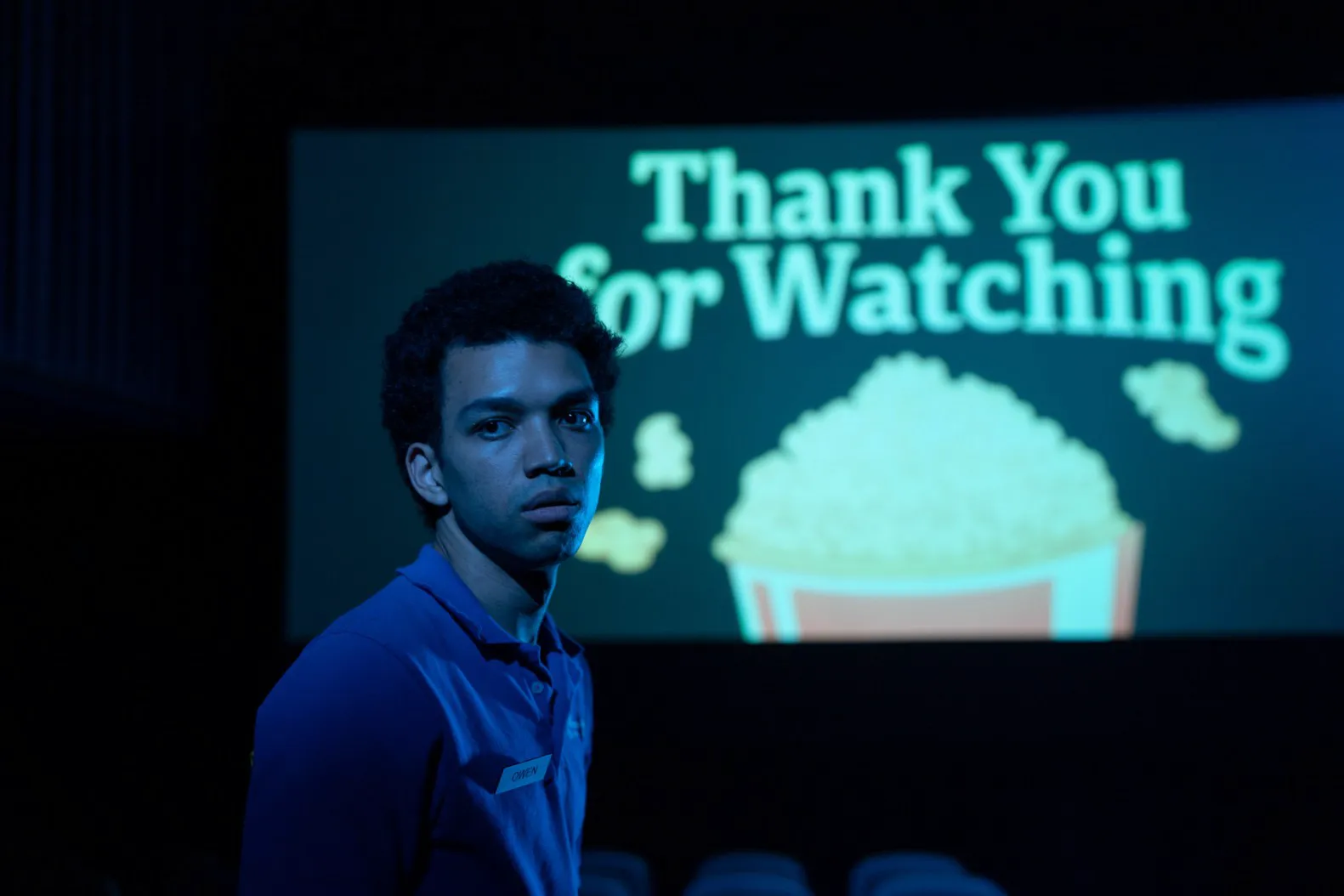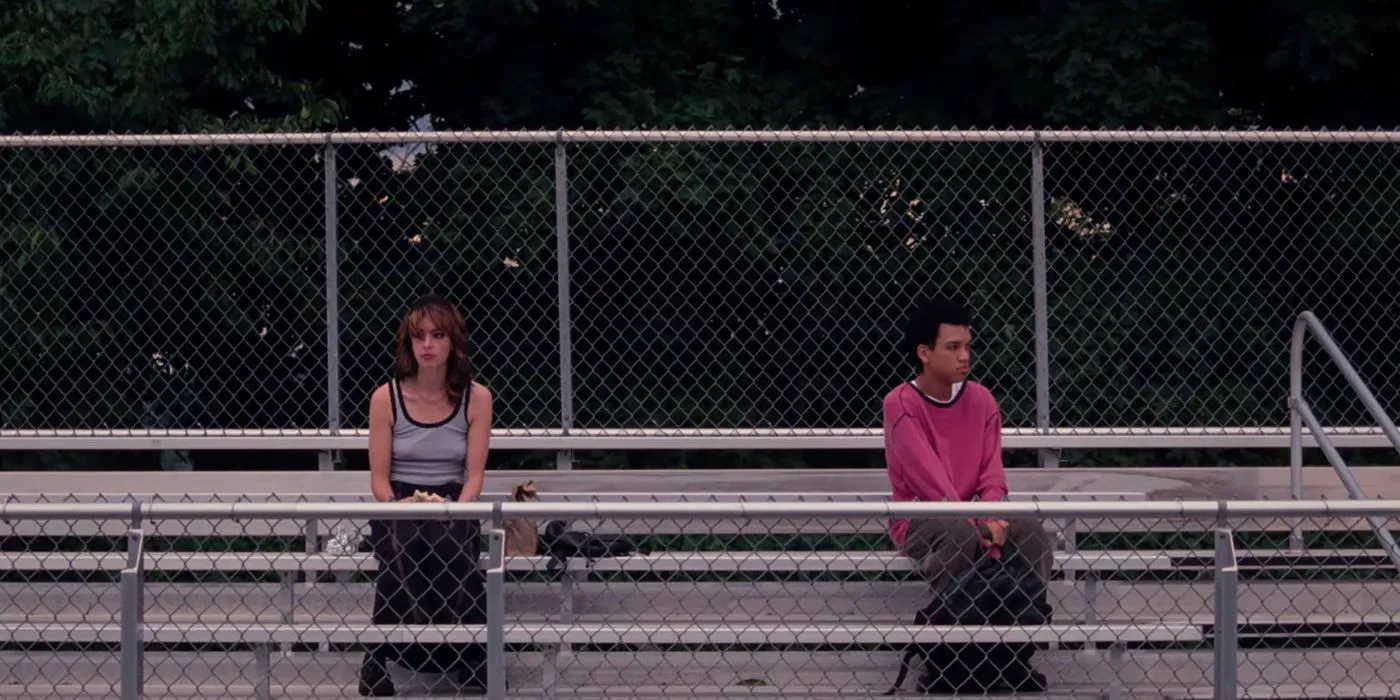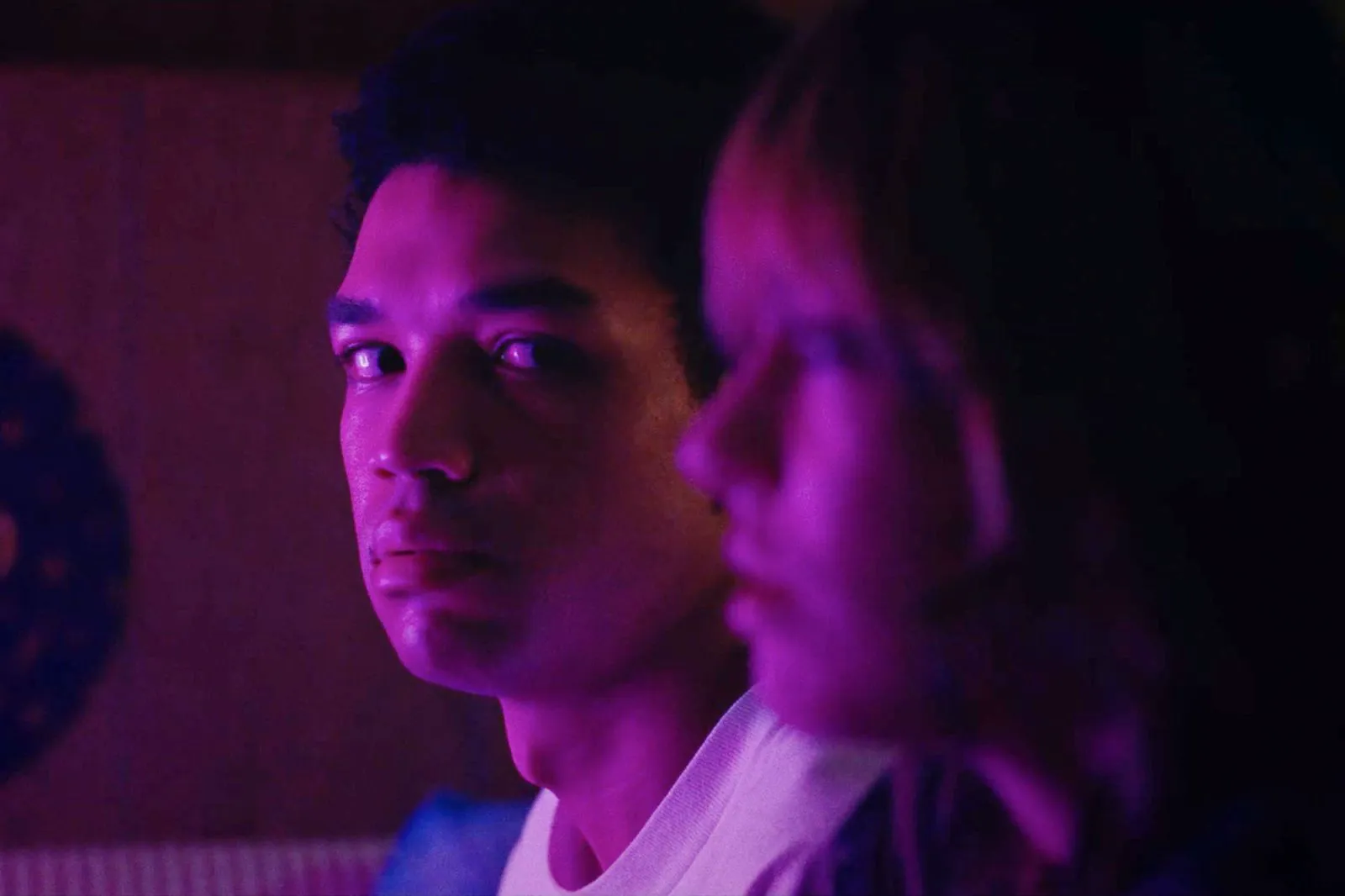In the mid-1990s, introverted teenager Owen (Ian Foreman) meets Maddie (Bridget Lundy-Paine), a reclusive high schooler and avid fan of “The Pink Opaque,” a TV series about a duo of cool girls who hunt monsters. Two years later, Owen (Justice Smith) is equally obsessed with the unique show. He escapes the mundane world into the series’ universe, identifies with one of the heroines, and discusses new episodes with Maddie. Unfortunately, their routine is shattered when his close friend disappears from their small town without a trace, and “The Pink Opaque” is canceled without a proper finale, leaving Owen alone with his solitude.

Justice Smith as Owen in “I Saw the TV Glow”
A New Voice in Indie Horror
In recent years, perhaps only Charlotte Wells (“Aftersun”) has received as much praise and anticipation as Jane Schoenbrun has this year. “I Saw the TV Glow,” only Schoenbrun’s second film, was hailed as a masterpiece immediately after its premiere at the Sundance Film Festival. Some critics predicted it would become a cornerstone of American indie cinema, and Schoenbrun was celebrated as the most original voice in filmmaking of the last decade. This acclaim came not from an obscure critic, but from Paul Schrader himself—a legend, a veteran, and someone who is far more likely to critique his peers than to praise their achievements. In short, the hype and expectations are sky-high. Only time will tell if the praise is fully justified, but one thing is already clear: “I Saw the TV Glow” is a truly unique film that will undoubtedly achieve cult status among a specific audience.

Bridget Lundy-Paine as Maddie in “I Saw the TV Glow”
Schoenbrun’s Signature Style
Jane Schoenbrun’s films cannot be viewed in isolation from the director’s personal background. A few lines from Schoenbrun’s biography radically alter the meaning of their debut film, “We’re All Going to the World’s Fair.” The screenlife psychological horror about an online challenge that alters the minds and bodies of participants transforms into an allegory of gender dysphoria and an autobiographical story about how digital spaces become safe havens for people who struggle with dissociation in the real world. “I Saw the TV Glow” is a spiritual successor to “World’s Fair,” using thematic oppositions to unite both films into a kind of diptych: digital aesthetics versus analog culture; Zoomers versus Millennials; bodily transformations versus their absence.

Justice Smith as Owen in “I Saw the TV Glow”
Trauma and Identity
Most modern horror films explore trauma, which, as we know, is unique to each individual: relationships with parents, the death of a loved one, or some repressed childhood memory. Schoenbrun seems to continue the trend of horror-psychologism and also explores the emotional states of the characters, but at the same time does something innovative for the genre: removes the trauma, or rather, the traumatic event. “I Saw the TV Glow” is a tragic story about a person who is afraid to accept their own identity and take a step towards a happy future. Owen twice refuses to undergo the rite of initiation proposed by Maddie, and thus ironically traumatizes himself, condemning himself to a life in limbo.
Schoenbrun’s main achievement is that they paint a portrait of suppressed emotions and desires using simple visual metaphors such as unsettling liminal spaces and television static, and most importantly, through a topical story about pop-cultural nostalgia. Owen, who adored “The Pink Opaque” as a teenager, watches one of the episodes as an adult on a streaming service and sees only a cringeworthy children’s show. Perhaps this can be seen as a message that the series was initially ridiculous, but there is also a more tragic interpretation befitting the film’s main idea: adult Owen despises himself so much that he consciously refuses to see the merits in the only thing that made him happy.
A Universal Tale of Regret
If desired, “I Saw the TV Glow” can be viewed as a more universal and abstract film about regrets, fantasies crushed under the weight of time, and the crisis of identity. This perspective turns the novelty into a conventional A24 film—perhaps not a horror (although the episode with Mr. Melancholy is one of the most frightening and uncomfortable in the company’s catalog), but a psychological thriller that fans of the studio will still appreciate. Neon-lit shots, the aesthetics of the nineties, Lynchian-spirited reflections on the influence of the ghosts of the past on life, surreal and difficult-to-explain scenes, covers of classics of the nineties and noughties by modern indie stars, and a provocative open ending. The film has everything it takes to impress viewers far from Schoenbrun’s personality and ideas and remind them that there is always time for radical change. Sometimes you really have to make a choice, as in the meme: either be happy or fit into society.